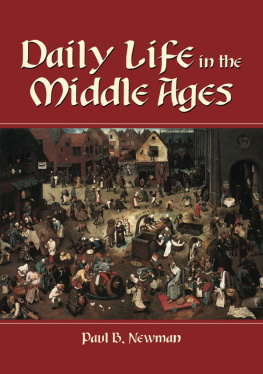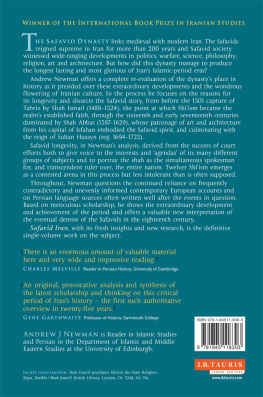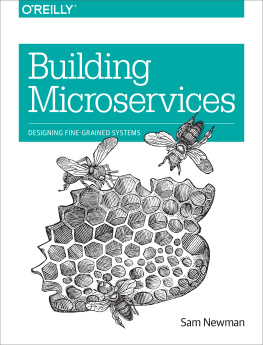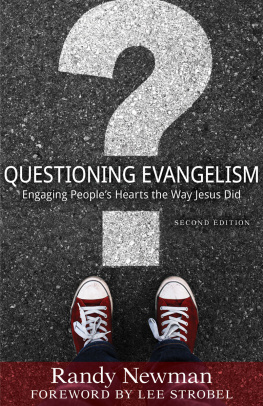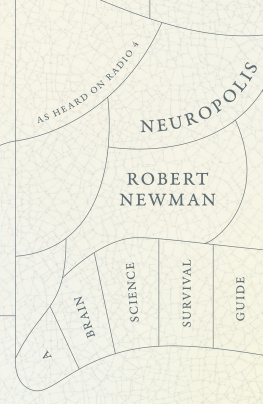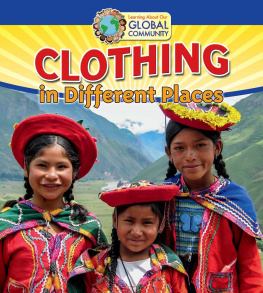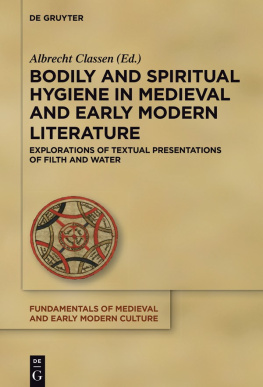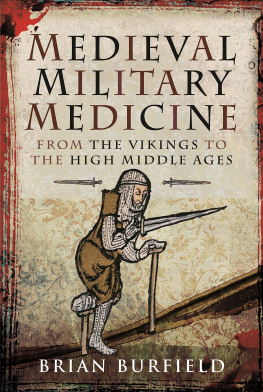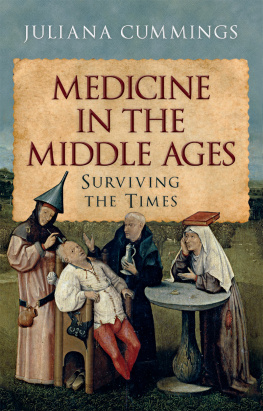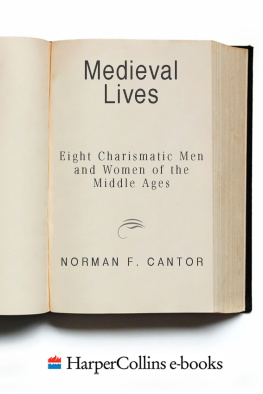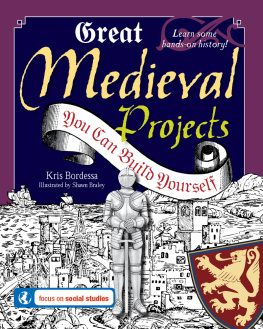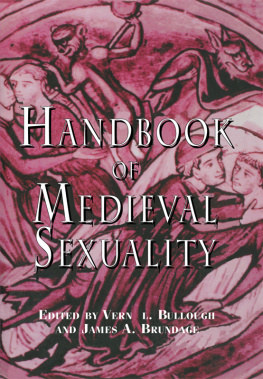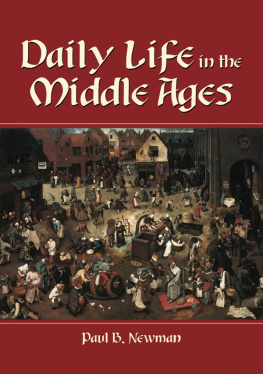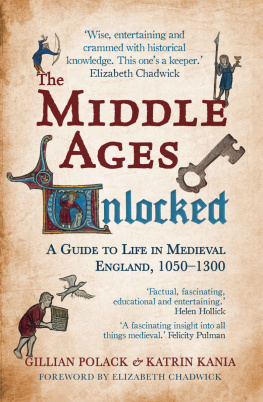Newman - Daily Life in the Middle Ages
Here you can read online Newman - Daily Life in the Middle Ages full text of the book (entire story) in english for free. Download pdf and epub, get meaning, cover and reviews about this ebook. City: Europe;Princeton;N.J, year: 2002;2012, publisher: McFarland & Co, genre: Religion. Description of the work, (preface) as well as reviews are available. Best literature library LitArk.com created for fans of good reading and offers a wide selection of genres:
Romance novel
Science fiction
Adventure
Detective
Science
History
Home and family
Prose
Art
Politics
Computer
Non-fiction
Religion
Business
Children
Humor
Choose a favorite category and find really read worthwhile books. Enjoy immersion in the world of imagination, feel the emotions of the characters or learn something new for yourself, make an fascinating discovery.
Daily Life in the Middle Ages: summary, description and annotation
We offer to read an annotation, description, summary or preface (depends on what the author of the book "Daily Life in the Middle Ages" wrote himself). If you haven't found the necessary information about the book — write in the comments, we will try to find it.
Daily Life in the Middle Ages — read online for free the complete book (whole text) full work
Below is the text of the book, divided by pages. System saving the place of the last page read, allows you to conveniently read the book "Daily Life in the Middle Ages" online for free, without having to search again every time where you left off. Put a bookmark, and you can go to the page where you finished reading at any time.
Font size:
Interval:
Bookmark:

the Middle Ages

Library of Congress Cataloguing-in-Publication Data
Newman, Paul B., 1961
Daily life in the Middle Ages / by Paul B. Newman.
p. cm.
Includes bibliographical references and index.
ISBN-13: 978-0-7864-0897-9
1. Civilization, Medieval. 2. Middle Ages. 3. Europe
Social life and customs. 4. Social historyMedieval, 500 1500. 5. City and town lifeEuropeHistoryTo 1500. 6. Country lifeEuropeHistoryTo 1500. I. Title.
CB353.N46 2001
940.1dc21 00-52197
British Library cataloguing data are available
2001 Paul B. Newman. All rights reserved
No part of this book may be reproduced or transmitted in any form or by any means, electronic or mechanical, including photocopying or recording, or by any information storage and retrieval system, without permission in writing from the publisher.
McFarland & Company, Inc., Publishers
Box 611, Jefferson, North Carolina 28640
www.mcfarlandpub.com
I wish to thank all the people who helped me complete this book, especially Jane Walker for her excellent drawings, Dr. Robert G. Calkins for generously providing four photographs from his book Medieval Architecture in Western Europe, and the Walters Art Gallery and its Photographic Services Division for images of some of its extensive collection of medieval illuminations. I also would like to thank John Price, Ana Garcia, Matt Amt, Dr. Carolyn Miles, Geraldine and Robert Newman (my parents), and everyone else who took the time to read and comment on my manuscript. Finally, I thank my wife, Alice, for her assistance in reviewing and editing the text as well as for all her patience and other support.
Life in the Middle Ages bore very little resemblance to its depictions in movies, novels, and the ever-growing number of Renaissance festivals featuring medieval entertainments. Though life in the Middle Ages was not as comfortable and safe as it is for most people in industrialized countries today, living in the Middle Ages was not as primitive and crude as it is so often portrayed. Though some parts of Europe temporarily lapsed into barbarism after the fall of Rome in A.D. 476, Roman institutions and public works were such an integral part of European civilization that they rarely disappeared completely. Even during the worst years of the centuries immediately following the fall of Rome, the so-called Dark Ages, the legacy of Roman civilization survived.
Besides any technological and cultural benefits inherited from the days of the Roman Empire, age-old practices such as weaving cloth, growing and preparing food, brewing beer, keeping clean, playing games, trading merchandise, and other fundamental human activities continued and evolved over the course of the Middle Ages. The fact that Romans no longer governed most of Europe had little if any impact on both the need for these activities and the ability of people to carry them out. Nor did the end of Roman rule mean an end to human imagination and creativity. The artistic and technical genius displayed in the great cathedrals, illuminated manuscripts, and other creations of medieval craftsmen proves this to be true.
Its easy to lose sight of what life was really like back then. After all, extremes of behavior, both high and low, are usually far more eye-catching than the day to day actions that keep a society running. So its not surprising that the Middle Ages are typically thought of as a time when kings and queens lived in opulence in splendid but drafty castles, when knights rode about in glittering armor performing chivalrous deeds or engaging in brutal warfare, and when peasants subsisted as best they could. However, as is usually the case, the truth lies somewhere between the extremes and there was much more to living in the Middle Ages than these stereotypes present.
In this book, Ive tried to present a sketch of the major activities that were part of everyday life in the Middle Ages. Admittedly, I have had to make some generalizations in trying to cover life across Europe over a span of almost a thousand years, from the fall of Rome to the beginning of the Renaissance around the end of the 1400s. Further, in keeping this book to a manageable length, Ive focused more on the second half of the Middle Ages, from about A.D. 1000 to 1485. Still, I think youll find that real medieval living was in many ways even more fascinating than some of the wildest fiction thats been created about the Middle Ages. For more detailed information on any of the topics, the reader may consult the books listed in the bibliography.
One final point, the term Middle Ages is actually a derogatory term. Historians long after the Middle Ages stuck this epoch of history with this label because they viewed these centuries as filler, a time in the middle between the great ages of classical Greco-Roman civilization and the Renaissance. But, as I hope this book and the many fine medieval studies now available prove, the Middle Ages were not a time of stagnation or decline. While its pace may have been less than steady, Western civilization continued to develop and progress during this time. Most of the highly touted achievements of the Renaissance did not appear spontaneously. Rather, they were based on groundwork built by artists, architects, engineers, intellectuals, writers, and other people of the Middle Ages, many of whose names and identities have been long forgotten. This book explains how those people lived.
Mentioning the foods and eating habits of the Middle Ages evokes a variety of vivid images, from the great feasts of the nobility to wretched meals of the peasantry. But permeating the popular idea of food in the Middle Ages are two persistent myths about medieval diet that reflect a deeper misunderstanding of how Europeans before, during, and after the Middle Ages lived. The first common myth is that spices were highly prized because they were instrumental in disguising the smell and flavor of the rotten meat that was a staple of the medieval diet. This myth is grounded in the assumption that the Europeans did not know how to preserve meat and therefore frequently had to eat spoiled meat. To support this myth, most people recall their grade school history lessons that taught that this need for exotic spices was one of the reasons that Columbus and other explorers set out on their hazardous voyages. The second common misperception is that the diet, even of the upper classes, was a poor one, poorly balanced with few or no vegetables. After all, the surviving menus for the great feasts indicate a preponderance of heavy meat dishes and some medieval church sermons as well as medical tracts warn against the potentially harmful effects of eating vegetables, especially raw ones. There are small grains of truth in both these myths, but lets examine them further and try to get a better picture of what food and diet were really like back then.
Spices and other flavorings for food were certainly highly prized in the Middle Ages but the idea that any of them were routinely used to disguise the smell and taste of rotten meat is just silly. Once meat has spoiled, it is toxic and no amount of spices can make it safe to eat. Medieval Europeans were no more immune to food poisoning than we are today. So why were spices so sought after? To add more flavor and zest to the food. Medieval Europeans werent that different from modern people. They had taste buds. They enjoyed different flavors and were willing to pay for them, much as modern restaurant patrons are every time some new cuisine appears. They also had some needs for spices which we generally dont have today: for use in mixtures for preserving foods and in preparing foods that had been preserved and reconstituted, losing much of their natural flavor in the process. Reconstituting meats preserved by dehydration, especially salting, required boiling or soaking to restore them to edible condition, not unlike with Smithfield ham or salt cod even today. Thus, spices helped make up for the loss of natural flavor incurred by the drying out and then rehydration of the meat.
Next pageFont size:
Interval:
Bookmark:
Similar books «Daily Life in the Middle Ages»
Look at similar books to Daily Life in the Middle Ages. We have selected literature similar in name and meaning in the hope of providing readers with more options to find new, interesting, not yet read works.
Discussion, reviews of the book Daily Life in the Middle Ages and just readers' own opinions. Leave your comments, write what you think about the work, its meaning or the main characters. Specify what exactly you liked and what you didn't like, and why you think so.

